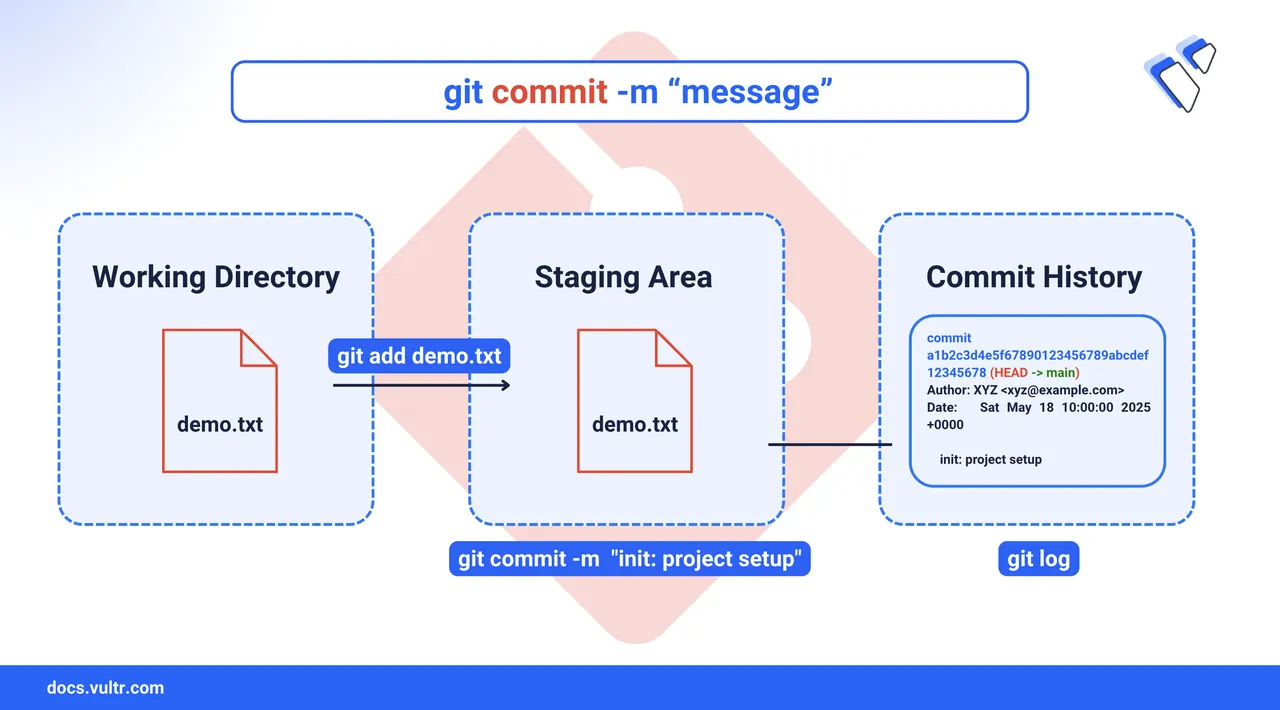
Committing changes is one of the most important actions in Git. It records the current state of your project by saving staged changes along with a message that explains what was done and why. Whether you're fixing a typo, adding a feature, or cleaning up old code, well-structured commits help you track progress, collaborate with others, and maintain a clean version history. This article covers basic commits, skipping the staging step, and amending previous commits.
The Short Answer Version
# Stage all modified files
$ git add .
# Commit with a message
$ git commit -m "Describe what this commit does"
# Commit changes to tracked files without staging
$ git commit -a -m "Skip staging and commit modified files"
# Update the most recent commit message
$ git commit --amend -m "New commit message"Common Options for Committing Changes
| Command | Description |
|---|---|
git add <file> |
Stages a specific file for the next commit |
git add . |
Stages all modified and new files in the current directory |
git commit -m "message" |
Commits all staged changes with a commit message |
git commit -a -m "message" |
Commits all modified tracked files without staging |
git commit --amend |
Updates the most recent commit with new changes or message |
Git Commit Without Staging
The -a flag lets you commit all modified tracked files directly without staging them first. This is useful when you want to skip git add but still commit file changes.
Command Syntax
git commit -a -m "Your commit message"-a: Automatically stages all modified tracked files.-m: Attaches a commit message directly in the command.
Command Demonstration
Create a tracked file under Git.
console$ echo "Hello" > demo.txt
Stage the file.
console$ git add demo.txt
Make an initial commit.
console$ git commit -m "Initial commit"
Modify the file without staging.
console$ echo "Appended second line to demo.txt" >> demo.txt
Commit the changes directly using
-a.console$ git commit -a -m "Added second line to demo.txt"
Check your commit history.
console$ git log --oneline
This workflow skips git add but only works on tracked files. Any new files still require staging before committing.
Update or Amend a Git Commit
You can use the --amend flag with git commit to modify your most recent commit. This is helpful for adding missing changes, fixing typos in messages, or cleaning up your commit history before pushing.
Command Syntax
git commit --amend--amend: Replaces the previous commit with a new one. This can modify the commit message, content, or both.-m: (Optional) Use this to supply a new message inline instead of opening your editor.
Command Demonstration
Example 1: Add a forgotten file to the last commit
Stage the missing file.
console$ git add file2.txt
Amend the last commit.
console$ git commit --amend
This opens your text editor to update the message (or keep it unchanged).
Example 2: Change the commit message without changing content
$ git commit --amend -m "Updated commit message"
This rewrites the most recent commit message without modifying the files.
Conclusion
In this article, you learned how to commit changes in Git effectively. You explored the core concepts of staging files, creating commits, skipping the staging step with -a, and updating the most recent commit using --amend. These workflows help maintain a clean, organized history and improve team collaboration.
With these techniques, you're now equipped to write clear commit messages, streamline your Git workflow, and maintain a version history that's easy to navigate and collaborate on.